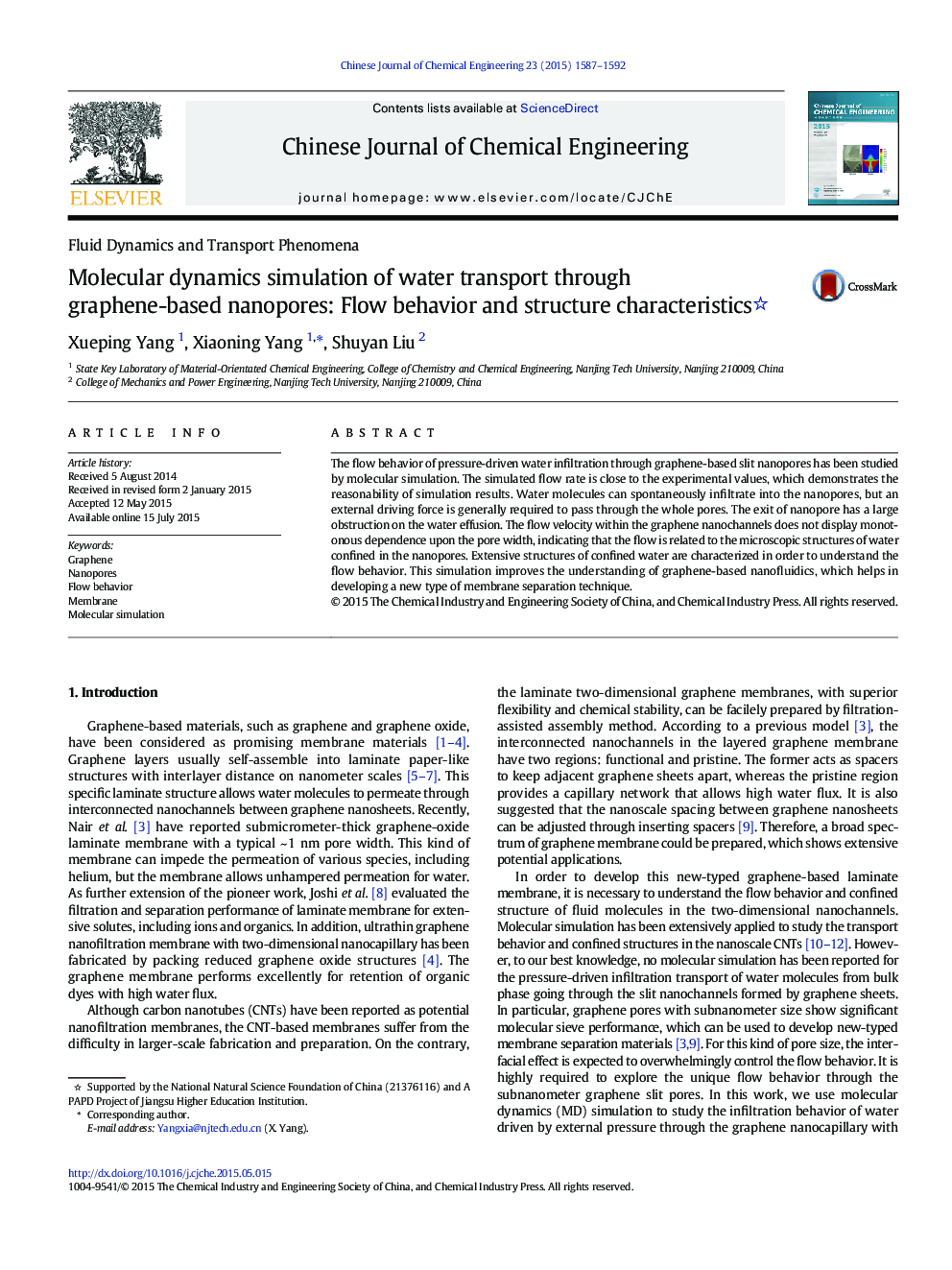| Article ID | Journal | Published Year | Pages | File Type |
|---|---|---|---|---|
| 166366 | Chinese Journal of Chemical Engineering | 2015 | 6 Pages |
The flow behavior of pressure-driven water infiltration through graphene-based slit nanopores has been studied by molecular simulation. The simulated flow rate is close to the experimental values, which demonstrates the reasonability of simulation results. Water molecules can spontaneously infiltrate into the nanopores, but an external driving force is generally required to pass through the whole pores. The exit of nanopore has a large obstruction on the water effusion. The flow velocity within the graphene nanochannels does not display monotonous dependence upon the pore width, indicating that the flow is related to the microscopic structures of water confined in the nanopores. Extensive structures of confined water are characterized in order to understand the flow behavior. This simulation improves the understanding of graphene-based nanofluidics, which helps in developing a new type of membrane separation technique.
Graphical abstractFlow behavior of pressure-driven water through graphene-based subnanometer nanochannels is simulated, along with the microscopic structures of water confined in the graphene nanopores. The flow behavior can be related to the microscopic structures of confined water.Figure optionsDownload full-size imageDownload as PowerPoint slide
